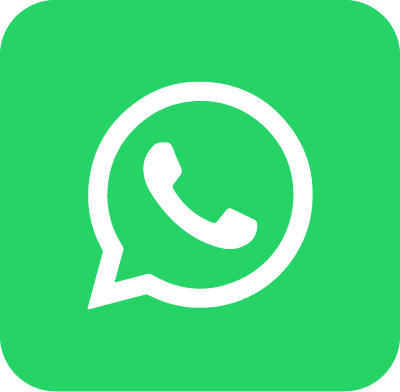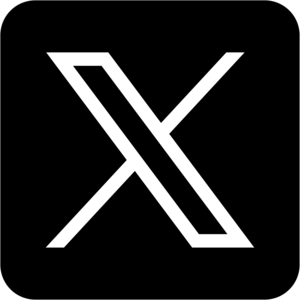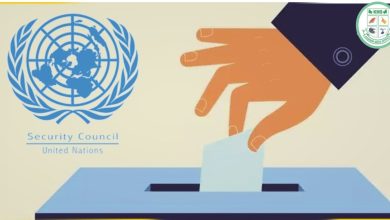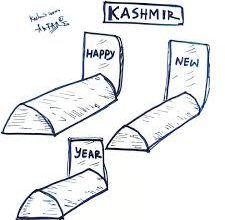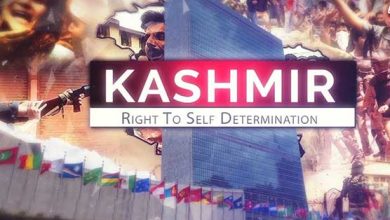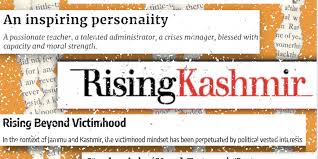 On August 5, the fifth anniversary of the revocation of Jammu and Kashmir’s special status under Article 370, the main editorial in the Valley’s largest circulated English news daily, Greater Kashmir, was about the side-fencing of bridges in Srinagar to prevent suicides.
On August 5, the fifth anniversary of the revocation of Jammu and Kashmir’s special status under Article 370, the main editorial in the Valley’s largest circulated English news daily, Greater Kashmir, was about the side-fencing of bridges in Srinagar to prevent suicides.
The lead opinion piece was on the recent landslides in Wayanad, Kerala, and included suggestions about how Kashmir can conserve its ecology and escape such a calamity. The opinion page featured two more articles – one on the importance of preserving family values and the other praising the Union budget. The latter had AI written all over it.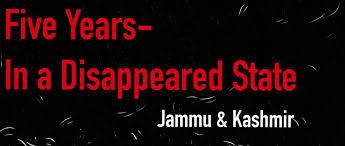
Five years ago, the state of Jammu and Kashmir was stripped of its autonomy, dismembered and demoted into two Union territories, and its people were placed under a total lockdown, cut off from each other and the world.
Greater Kashmir’s silence on its editorial page (and even front page) on the fifth anniversary stood out in contrast with news reports and opinion pieces in the national media critically assessing the situation in Jammu and Kashmir, amid record unemployment, declining economic output and a worsening security scenario in the Jammu region.
One might imagine the newspaper would have published something about the abrogation – praise, criticism, analysis, anything – the following day. But the August 6 edition was just as silent.
Restrictions on dissent
The 2019 decision had provoked anger and resentment in Kashmir but this could not find much expression on account of the political crackdown. Figures disclosed in Parliament recently suggest that Jammu and Kashmir accounts for 36% of all UAPA cases filed in the country between 2020 and 2022.
Fact-finding missions and advocacy groups have decried what they claim is the ongoing abuse of law and the restrictions on civil rights and democracy in the erstwhile state. The Forum for Human Rights in Jammu and Kashmir (TFHRJK) last week expressed concern over the recent enhancement of the lieutenant governor’s powers – a decision clearly timed to come soon before the Election Commission announced dates for the assembly election. Just week before that, Human Rights Watch (HRW) had denounced “repressive policies including arbitrary detention, extrajudicial killings, and other serious abuses” in the region.
Despite this, the opinion pages of the widely read English newspapers in Jammu and Kashmir, do not reflect these concerns. Instead, content analysis suggests an effort to rework the regional narrative so that it either actively perpetuates the Bharatiya Janata Party’s political messaging or does nothing to disturb it.
A content analysis of two newspapers
The Wire reviewed content in the opinion section of the Valley’s two most circulated English newspapers – Greater Kashmir and Rising Kashmir – between July 20 and August 5. During this period and in the run-up to it, a series of political developments took place in Jammu and Kashmir that sparked critical commentary in sections of the national press. The Union Territory’s own newspapers, which should help the inhabitants build informed opinions, however steered clear.
Geeta Seshu of the Free Speech Collective, who co-authored a survey on the state of the media in Kashmir in September 2019, said the present situation is worse. “Back then, our survey flagged the absence of editorial voice in newspapers. Instead, they ran soft subjects such as vitamin consumption,” she said. “But it seems the media policy of the J&K government is having its desired effects.”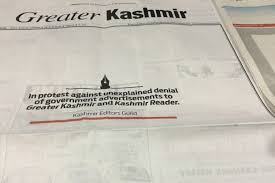
Enacted in 2020, the J&K Media Policy vows to penalise newspapers by withdrawing advertisement funds if they publish “anti-national content”. The policy prods the local media to instead “highlight the developmental activities” [sic].
Manufacturing consent
During the period under review, Greater Kashmir published 10 editorials, none of which had anything to say about the political developments in the Union Territory. Instead, they were about road accidents; drinking water shortage; change of school timings; the need for more tourist destinations; duty of the citizens towards their parents; dry weather; the Ring Road project in Srinagar and more.
Curiously, a majority of the editorials that Rising Kashmir ran as its own comment, The Wire found, were articles on geopolitics published originally on the website of the Delhi-based think tank Observer Research Foundation (ORF), which is partly funded by Reliance Industries. The newspaper, however, did not credit these to ORF.
The Wire investigation reveals that many articles published in local newspapers appear to have been put together with the help of artificial intelligence (AI). A case in point is the August 5 article in Greater Kashmir authored by a local BJP politician who praised the Union budget and said it “will create economic growth and spur social cohesion” in Kashmir.
Since the syntax appeared too mechanical, The Wire decided to run the text through ZeroGPT, a tool that determines the use of Large Language Models (LLMs). Except the first line quoting the Urdu poet Parwaz Jalandhari, the entire article was AI-generated, the results said.
While Rising Kashmir has yet to respond to questions sent by The Wire, the opinion editor of Greater Kashmir ascribed the presence of AI-generated text in op-ed pages to the “challenge” of sifting through content because AI detection tools don’t work with full accuracy, adding that the paper was “trying to weed out such a stuff.” But The Wire’s analysis of the article in question relied on at least four different AI detectors, all of which concluded that it was extracted from mediums using LLMs. Rising Kashmir, however, is yet to respond. We will update the article as and when they do.
With a few exceptions, the edit pages of the two newspapers appeared to host a curated assortment of opinion pieces that hammered home a particular political viewpoint. This was punctuated by amusing – sometimes bizarre – write-ups by local contributors.
On July 30, Greater Kashmir featured a column by a faculty member at a local engineering college that was an encomium to his former director who retired in 2016. Among the contributions enumerated by the author was that his senior gave two, instead of just one, gulab jamun to students participating in the internship programme at the college.
On July 25, Rising Kashmir carried a full-page op-ed on how one can rear pigeons at home. On July 27, it featured a piece on fights between siblings. On August 4, there was a full-page op-ed on vitiligo. On August 5, the anniversary of the abrogation of Jammu and Kashmir’s special status, the paper gave enormous space to a fictionalised story commemorating ‘anti-corruption week’.
The opinion pages also trumpet the narrative of economic prosperity in Kashmir although the TFHRJK report released on August 4 observed that the net state domestic product (NSDP) growth rate has declined from 12.31 % five years ago to 8.41 % in 2024.
Few ‘honourable’ exceptions
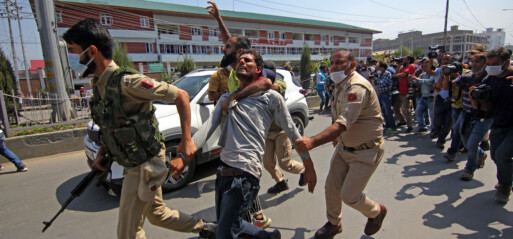
Only a handful of articles printed during this period bore a semblance of critical appraisal. Among them was an op-ed, “Kashmir’s ‘Used Future’ Trap”, by Greater Kashmir’s senior editor. The article voiced subtle criticism of the “development activities” in Kashmir’s urban spaces since 2019, especially for the costs on the environment they have inflicted.
Some articles purported to offer a careful overview of recent political developments but are full of attributions such as “they describe it” or “they want to tell people”, implying the author’s disavowal of any inconvenient detail that might have crept in.
A July 25 op-ed by a retired IAS officer in Greater Kashmir stood out for its demand for the restoration of statehood. But the author made sure he moderated this with the use of ingratiating language: “People of Jammu and Kashmir do not deserve to be left out of PM’s Sab ka Saath, Sab ka Vikas, Sab ka Vishwas and Sab ka Prayas.”
In Rising Kashmir, one op-ed published on July 21 flagged “concerns about the erosion of democratic principles” in the context of the MHA amendment in July giving more powers to the lieutenant governor at the cost of the elected chief minister.
Engineering pro-government narratives
The highlight, of course, are the articles suffused with politically loaded language, nearly all of which conform to the ruling party’s worldview around the political situation in Kashmir.
On July 20, Greater Kashmir published a column by a local politician who drew a causal link between the spate of militant incidents and the “electoral outcomes” of the Lok Sabha polls, in which all three parliamentary seats in Kashmir were bagged by non-BJP parties. But the logic was counterintuitive because much of the militant upsurge is centred around Jammu where the BJP had emerged victorious.
Although the author did not specify who exactly said what, he nevertheless berated the media for perpetuating “extremist ideologies” responsible for the renewed wave of militant attacks. “It is time to call out these deceitful agendas for what they are—a deliberate attempt to destabilise the region and thwart national unity and security,” he wrote.
It is interesting that instead of seeking accountability from the government over serious security lapses, the author crafted a vaguely-worded, conspiratorial article that made a scapegoat out of the press, pushing dangerous narratives about the nexus between terrorism and media.
This, even when the terrorism cases against media-persons in Kashmir have collapsed in the face of judicial scrutiny. Kashmiri journalists like Kamran Yusuf, Fahad Shah, Sajad Gul, Aasif Sultan and Mannan Dar have all got bail from courts on the grounds that evidence against them was either too weak, or did not exist at all.
Further analysis of this article reveals that it was also completely AI-generated. All leading detection tools, GPTZero, QuillBot, Scribbr and ZeroGPT, have pointed to its AI origins. That makes it one of the rare cases where AI technologies have been harnessed to mount politically motivated attacks on the last surviving avenues of critical journalism in Kashmir by connecting them to militancy.
Kashmiri observers who spoke to The Wire said that young readers were increasingly growing suspicious of the local newspapers. “Whether true or not, it is a conventional belief here that security agencies vet the content of these newspapers,” said a scholar from Pulwama town in South Kashmir. “But if there’s no parallel documentation, these papers will become archives, and that is what will do long-term damage. It will completely warp the truth about this place.”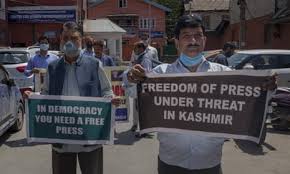
More pro-BJP content creators
Another element that came up in The Wire’s analysis was the overrepresentation of columnists associated with the BJP. During the review period, Shenaz Ganai wrote two columns for Greater Kashmir, on July 29 and August 5; Ajay Kumar Chrungoo wrote for Rising Kashmir on July 22; Abhijeet Jasrotia wrote for Rising Kashmir on July 26; and G.L. Raina wrote for Rising Kashmir on August 3. All of them are spokespersons for the BJP. There wasn’t any column, however, by their counterparts from the regional political parties.
A spokesperson for a major regional party told The Wire that they had been regularly writing for both these papers previously. But over the past few years, the papers have discontinued their columns. “We mail them our articles. But they are not published,” he said.
When it is not the BJP spokespersons writing, there is content syndicated from the government’s Press Information Bureau (PIB). For instance, a PIB-issued column published on August 2 discussed the Modi administration’s efforts to root out tuberculosis in India.
Sinister spin-doctors
Even when the contributors appear to be neutral observers and experts, they feed into the narrative of “development” and “progress” since 2019. A case in point is a July 30 column in Rising Kashmir authored by one Raj Nehru who shares an anecdote about a meeting with some Kashmiris who were sceptical of the Modi government’s development spree in Kashmir.
Nehru pathologised them as people afflicted with a “psychological curse” who are unable to appreciate the benefits of “economic growth” that Prime Minister Modi has made possible. He reels off the list of indices showing improvement in the Gross State Domestic Product (GSDP), Human Development Index (HDI), Compound Annual Growth Rate (CAGR), and per capita income to authenticate his argument.
Yet, when The Wire spoke to senior economists in Kashmir, they pointed out the flawed nature of the data. “Our per capita income was already ahead of states like Punjab way back in the 1970s,” one Srinagar-based economist, working with a prominent bank, said. The figures being bandied about now are based on current prices, as a result of which the data is on the higher side, he said.
“Real value of GDP is estimated when we calculate it from 2011 and discount the inflation,” he explained. “As the recent review of the J&K budget by Congress leader Jairam Ramesh showed, the current dispensation has been borrowing heavily to finance developmental initiatives, many of which are primarily meant to serve defence, or create better optics through Smart City projects.”
Ramesh in a recent news conference had accused the finance minister of fiscal mismanagement in Jammu and Kashmir. “The FM got approval from Parliament to borrow Rs 12,000 crore last year. This year, Budget documents reveal that the actual borrowings were twice the amount, at Rs 24,000 crore. Borrowings have risen five-fold in the last two years,” the Congress leader said, adding that Jammu and Kashmir’s share in the national GDP had declined in the past 9 years while unemployment has gone up.
This is also corroborated by the recent CAG report that revealed that Jammu and Kashmir’s liabilities are at an all-time high of Rs 1.12 lakh crore. “It is this debt-driven development which is reflected in these figures,” the economist added.
A lost opportunity
Media analyst Seshu said the press in Kashmir was complicit in altering the very paradigm of news itself. “You are now rearing an entire generation of people who will not have any critical opinions, and who will not be allowed any free debates or discussions,” she said.
It is the responsibility of the media to give space to a plurality of opinions, she said. “But here there is a clear attempt to peddle only a certain kind of opinion. Ultimately, people will make up their own minds. But it is a huge lost opportunity for the media in Kashmir,” Sheshu added.
